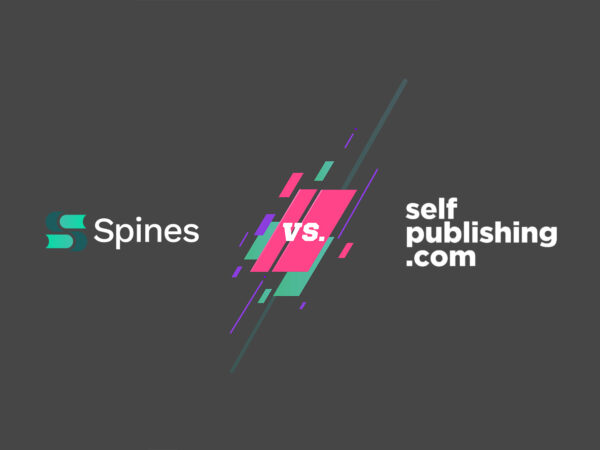In today’s rapidly evolving literary world, authors have more control over their publishing journey than ever before. Navigating and understanding the complex landscape of self-publishing vs traditional publishing is an important aspect of this journey. Among the myriad options available, self-publishing has emerged as a prominent choice, offering writers a direct path to bringing their books to readers, while contrasting with traditional publishing in terms of control, financial investment, and time to market. This method typically bypasses traditional publishing houses, instead relying on self-publishing companies and platforms that facilitate various aspects of the book’s production, marketing, and distribution.
Self-publishing companies offer services that handle much of the legwork involved in publishing a book, such as editing, formatting, cover design, and sometimes marketing and sales strategy. In contrast, self-publishing platforms provide a more DIY approach where authors can choose which services they need, often benefiting from more flexible pricing and greater creative control. Both routes provide significant advantages but differ widely in terms of cost, time investment, and personal involvement required from the author. Many self-published authors have found success through these avenues, highlighting the increasing number of writers choosing this path.
Choosing the right publishing route is crucial as it can greatly influence not only the financial returns but also the reach and impact of the book. Each method has its unique processes, benefits, and challenges, making it vital for authors to understand which option best aligns with their ambitions, capabilities, and resources.
In this article, we will explore these avenues in detail, focusing on what traditional publishers, self-publishing companies, and platforms like Spines. By examining Spines alongside other options, we aim to provide you with insightful guidance on choosing the best path for publishing your book, ensuring you make a well-informed decision that maximizes your book’s potential. Let’s help you decide between a self-publishing company vs. self-publishing platform!
Self-Publishing Company vs. Platform
In the vast landscape of self-publishing, authors have a critical decision to make between partnering with a self-publishing company or utilizing a self-publishing platform. Both options serve the same fundamental purpose—to help authors publish their works—but they do so through distinctly different models and sets of services. Choosing a self-publishing platform offers authors complete control over the publishing process, from writing and editing to cover design, formatting, and marketing.
This autonomy not only allows for creative freedom but also places the responsibility for production costs and marketing efforts squarely on their shoulders, potentially leading to higher profit margins. Ultimately, becoming a self-published author empowers individuals with the decision-making power and identity of someone who has full autonomy over their book’s content and direction.
Definitions and Roles
A self-publishing company typically offers a comprehensive package that handles all aspects of the book’s production and publication. These companies act as a one-stop-shop, providing services that range from manuscript editing and book design to marketing and distribution. They often work on a fee-for-service model or take a percentage of sales, which can be substantial. The key advantage is that they manage the entire publishing process, allowing the author to focus more on writing than on the technicalities of publishing.
In contrast, a self-publishing platform provides a more flexible and often more affordable approach. Platforms like Amazon’s Kindle Direct Publishing or Spines offer tools that enable authors to publish their books with varying degrees of autonomy over each step of the process. These platforms often use technology to streamline operations such as formatting and distribution, lowering costs and increasing the speed at which books can be brought to market. However, they typically provide less personalized service compared to self-publishing companies.
Comparison of Services
Professional Editing: Self-publishing companies often include professional editing as part of their packages, ensuring that manuscripts are thoroughly vetted by industry experts. This can be a boon for authors who are less familiar with the editing process or who want to ensure a high level of polish. Platforms generally do not offer editing services directly but may provide tools or partnerships with freelance editors at negotiated rates.
Book Design: Both self-publishing companies and platforms offer book design services, but the approach varies significantly. Companies may provide bespoke design services with experienced book designers, which can result in unique and professional aesthetics tailored to the book’s content and target audience. Platforms typically offer templates or automated design tools that create acceptable designs at a lower cost and with faster turnaround.
Marketing Efforts: Marketing support is another area of divergence. Self-publishing companies might provide comprehensive marketing plans, including press releases, book tours, and social media promotion. Platforms, on the other hand, generally offer self-service marketing tools, such as SEO optimization for listings and access to promotional marketplaces, requiring more effort from the author.
Distribution Channels: Both types generally offer wide distribution channels. However, self-publishing companies might have better access to brick-and-mortar stores and specialty markets, whereas platforms excel in online distribution through major e-commerce websites and their own networks.
Case Studies
One notable success from the self-publishing company route is The Martian by Andy Weir, which was initially self-published and then picked up by a major publisher due to its online success. Its journey from an independently published novel to a bestseller highlights how self-publishing companies can serve as a launchpad to traditional publishing.
On the platform side, E.L. James’ Fifty Shades of Grey began as a self-published work on a platform similar to those offered by today’s self-publishing services. Its immense online popularity led to traditional publication and a major motion picture deal, showcasing how platforms can help authors retain control while achieving commercial success.
Choosing between a self-publishing company and a platform depends largely on the author’s preferences for control, budget, and support. Each offers distinct advantages, and understanding these can help authors make the best choice for their book’s success.
Self-Publishing Overview
Self-publishing represents a paradigm shift in how books are brought to market, empowering authors with unprecedented control over every aspect of their book’s journey—from conception to readers’ hands. This method allows authors to retain creative autonomy, making independent decisions about content, cover design, formatting, pricing, and marketing strategies. Such freedom is particularly appealing to those who wish to preserve their original vision or explore niche topics that might not attract mainstream publishers.
The self-publishing process involves several critical steps, each requiring careful consideration and management. Initially, authors must perfect their manuscripts, which often involves hiring freelance editors and proofreaders to ensure the text is error-free and polished. Following this, the book’s design—both interior and cover—needs to be professionally crafted to appeal to potential readers, a process that traditionally could be both time-consuming and costly.
Production costs in self-publishing can vary widely depending on the choices an author makes. Printing expenses are determined by the book’s format (e.g., paperback, hardcover) and the print run size, with many authors opting for print-on-demand services to mitigate upfront costs. Marketing and distribution are additional significant expenses, with options ranging from online advertising and social media campaigns to more traditional methods like book tours and signings.
These stages are crucial for visibility and sales but can quickly become expensive without the bulk-buying power or established channels that traditional publishers provide. The marketing landscape for self-published books is rapidly evolving, with a growing emphasis on building a platform or audience through social media, email subscribers, and other digital channels to attract publisher interest or self-sustain.
Platforms like Spines revolutionize this model by leveraging artificial intelligence to streamline and reduce the costs associated with these processes. Spines’ AI-driven approach efficiently manages tasks such as formatting and cover design, which not only speeds up production but also cuts down the expenses involved. For example, AI tools can generate multiple cover designs for an author to choose from, reducing the need for costly graphic design services.
Furthermore, Spines enhances the marketing and distribution aspects of self-publishing. Its algorithms can optimize the book’s visibility across various platforms and ensure it reaches the target audience effectively. The platform’s extensive distribution network includes major online retailers such as Amazon and Barnes & Noble, enabling global reach without the need for a significant personal network or marketing expertise from the author.
The advantages offered by Spines and similar platforms underscore a significant benefit of self-publishing: cost efficiency. By automating much of the labor-intensive work, these platforms allow authors to invest more in quality content creation and less in the logistical challenges of book production and distribution. This shift not only makes self-publishing more accessible but also more sustainable for authors looking to publish independently while maximizing their creative freedom and financial return. Authors now face a critical decision between traditional or self-publishing, weighing the prestige and security of traditional publishing against the autonomy and potential financial benefits of self-publishing.
Traditional Publishing Overview
Traditional publishing remains a highly esteemed route for authors seeking not just publication, but also a certain prestige and a range of professional support that self-publishing might not offer. When an author signs an agreement with a publishing house, they gain access to the expertise and resources necessary to oversee the production, distribution, and marketing of the book in exchange for a significant share of the profits. This model highlights the role of publishing houses as crucial intermediaries between authors and readers, offering tailored processes for specific genres and handling the financial aspects of publishing, such as advances, royalties, and potential earnings. Understanding the intricacies of this model is essential for any author considering their publishing options.
Traditionally published authors often face a lengthy process involving multiple rounds of edits, cover approvals, and coordination with publishing houses for release dates. This emphasizes the coordination and time investment behind the scenes for every book. Additionally, when comparing royalty rates, traditionally published books typically offer lower rates to authors than self-published works, highlighting a significant financial consideration for those deciding between traditional and self-publishing paths.
Traditional Publishing Model and the Role of Publishers
In traditional publishing, authors typically submit their manuscripts to publishers or literary agents, who then decide whether to accept them based on their market potential, quality, and alignment with the publisher’s brand. Once a manuscript is accepted, the publisher assumes all financial risks associated with publishing the book. This includes covering costs for editing, design, marketing, distribution, and more. The publisher also handles legal aspects such as copyright registration and contracts.
Publishers have established relationships with printers, distributors, and retailers, which can significantly amplify a book’s reach. They use their expertise and resources to refine, market, and sell the book, aiming to maximize its commercial success. For authors, getting a book accepted by a traditional publisher can be a mark of professional validation and can open doors to extensive media exposure, awards, and critical acclaim.
Support Provided by Traditional Publishers
Traditional publishers offer substantial support throughout the publishing process. This starts with a professional editing team that works to improve the manuscript’s structure, tone, and coherence. Following this, experienced designers craft the book’s cover and layout to appeal to the target audience. Marketing teams develop and execute promotional strategies that might include media interviews, book signings, and social media campaigns.
Moreover, traditional publishers have comprehensive distribution networks that ensure a book is available in major bookstores and online platforms worldwide. This extensive distribution is difficult for self-published authors to achieve on their own.
Benefits and Drawbacks
The main benefits of traditional publishing include the publisher’s expertise in book production, marketing, and distribution, which can significantly relieve the author’s burden. Additionally, the financial risk is borne by the publisher, not the author. The prestige associated with being published traditionally can also enhance an author’s reputation and professional opportunities.
However, traditional publishing is highly competitive, with many more manuscripts submitted than accepted. The querying process can be lengthy and discouraging, often requiring an investment of time with no guarantee of success. Once a book is accepted, authors often have less creative control over the final product, as publishers aim to tailor books to market demands. Royalties from traditional publishing are typically lower than potential earnings from self-publishing, as profits are shared with the publisher.
In summary, traditional publishing can provide significant benefits in terms of professional handling and market reach, but it requires giving up a certain degree of control and accepting potentially lower financial returns. For authors weighing this option against self-publishing platforms, it’s crucial to consider personal career goals, desired levels of involvement in the publishing process, and financial expectations.
Spines Publishing Platform: A Game-Changer for Authors
In the competitive landscape of book publishing, Spines emerges as a transformative force, particularly for authors seeking a fast, affordable, and comprehensive path to publication. With its innovative use of technology and customer-focused services, Spines is redefining what it means to self-publish in today’s digital age.
Streamlined Publishing Process
One of the most compelling features of Spines is its ability to drastically reduce the time it takes to move from manuscript to published book. Traditionally, the publishing process can take anywhere from several months to a year, but Spines’ streamlined process ensures that books are published in less than 30 days. This is made possible through a highly automated system that handles everything from text formatting and layout to cover design. For authors eager to see their work in readers’ hands, this rapid turnaround is invaluable, not only keeping their content timely but also allowing them to capitalize on market trends.
Affordability Through AI-Driven Efficiencies
Cost is often a significant barrier for aspiring authors, but Spines addresses this challenge head-on. By integrating artificial intelligence throughout the publishing process, Spines is able to offer services at a fraction of the cost typically associated with traditional and even other self-publishing avenues. This AI-driven efficiency is evident in every step, from automated typesetting to algorithm-driven marketing strategies, which reduce the need for expensive human labor and lower the overall cost of publishing. Spines’ comprehensive plans are designed to be budget-friendly while still encompassing all necessary services to ensure a high-quality product and successful launch.
Dedicated Support and User-Friendly Interface
Despite the high level of automation, Spines does not compromise on personalized support. Each author is assigned a personal production manager who guides them through the entire publishing process. This dedicated support ensures that authors are not left navigating the complexities of publishing alone. Additionally, Spines’ platform is designed to be intuitive and user-friendly, making it accessible even to those with minimal technical expertise. The dashboard allows authors to track their book’s progress, make adjustments, and interact with their production team seamlessly, ensuring a smooth and stress-free experience.
Global Distribution and Format Flexibility
Reaching a wide audience is crucial for any author, and Spines excels in this area with its expansive global distribution network. Through partnerships with major retailers such as Amazon and Barnes & Noble, Spines ensures that books are available not only in major markets but also in niche ones across the world. Furthermore, Spines supports all major book formats, including print-on-demand (POD), eBooks, and audiobooks, catering to diverse reader preferences and maximizing the book’s reach.
Commitment to Quality and Satisfaction
Understanding the apprehensions that authors might have about self-publishing, Spines is committed to delivering only the highest quality products. This commitment is underscored by a 7-day money-back guarantee, a rare assurance in the publishing industry. This policy reflects Spines’ confidence in the quality of its services and its dedication to author satisfaction. Whether it’s addressing concerns over print quality, distribution, or customer service, Spines stands behind its offerings, providing authors with peace of mind.
In conclusion, Spines is not just a platform; it’s a comprehensive solution for authors who demand speed, affordability, quality, and extensive reach. Its innovative use of technology, combined with dedicated human support and a robust distribution network, makes it an ideal choice for authors who wish to retain control over their publishing journey while ensuring their book achieves its maximum potential. For authors navigating the complex world of publishing, Spines offers a clear, efficient, and effective path to success.
Choosing the Right Path for Your Book
Deciding how to publish is as crucial as the writing itself. Authors must consider their goals, the specifics of their genre, and the potential market for their book to make an informed decision about the best publishing route. For those contemplating a traditional publishing deal, it’s important to understand the prerequisites, such as the need for a substantial audience, and weigh the benefits against the flexibility and control offered by self-publishing. Here, we provide a roadmap to help authors evaluate these factors and choose a path that aligns with their long-term career aspirations.
Evaluating Publishing Goals and Genre Specificity
First, authors should clearly define their publishing goals. Are you looking to reach a wide audience quickly? Do you prioritize creative control or financial return? Understanding your priorities will guide your choice between traditional publishing and self-publishing platforms.
The genre also plays a critical role in this decision. Certain genres, like literary fiction or high-concept nonfiction, might benefit more from traditional publishing, which can provide crucial access to established networks, critical acclaim, and literary awards. In contrast, genres such as romance, science fiction, or self-help can thrive on self-publishing platforms, which often see quicker turnaround times and offer greater royalties.
Authors should research the market trends within their genre. For instance, if there’s a growing demand for audiobooks in your genre, platforms like Spines offer easy integration into various formats including audiobooks, providing a distinct advantage.
Aligning with Long-Term Career Goals
Choosing a publishing platform that aligns with your long-term career goals is essential. Platforms like Spines cater to authors who want to maintain control over the publishing process and seek to establish a brand or a business around their writing. The speed and affordability of a service like Spines allow authors to experiment with market trends and respond promptly to readers’ shifting preferences, which is invaluable for building and maintaining a fan base.
Moreover, comprehensive services offered by platforms like Spines reduce the burden of managing the minutiae of publishing, freeing authors to focus on what they do best—writing and creating. This can be particularly beneficial for authors who plan to write multiple books, as it establishes a streamlined process for each publication.
Practical Advice for Navigating the Publishing Landscape
For new authors, navigating the publishing landscape can seem daunting. Here are a few practical steps to consider:
1. Research: Spend time understanding the different publishing routes and the specific services they offer. Join author groups, participate in webinars, and read up on the latest industry trends.
2. Professional Advice: Don’t hesitate to seek advice from experienced authors or consult with literary agents. Their insights can provide clarity and help you avoid common pitfalls.
3. Evaluate Services: If considering self-publishing platforms, evaluate their services in detail. Check their book quality, distribution network, speed of publication, and cost-effectiveness. Platforms often offer trials or guarantees, which can be a safe way to assess their fit for your needs.
4. Start Small: You might consider initially releasing a shorter work or a novella to gauge the response and understand the process before committing to a major manuscript.
5. Stay Flexible: The publishing industry is dynamic, and what works today may not tomorrow. Stay informed and flexible in your strategies.
Choosing the right publishing path is a decision that can define an author’s career. By carefully assessing each option’s alignment with personal and professional goals, authors can make strategic choices that not only enhance their current projects but also pave the way for future success. Platforms like Spines offer a modern, author-centric approach that can significantly benefit those looking to maintain control and adapt quickly to the changing market.
Conclusion: Making an Informed Choice
Throughout this exploration of self-publishing companies, platforms, and traditional publishing routes, we have highlighted key differences that can guide authors in making a choice that best suits their personal and professional objectives. Each route offers distinct advantages and limitations—from the comprehensive support and market reach of traditional publishing to the creative control and higher royalty rates provided by self-publishing companies and platforms.
Platforms like Spines represent a significant evolution in self-publishing, combining speed, affordability, and a broad range of services that are tailored to modern authors’ needs. Spines simplifies the publishing process through its AI-driven technologies, offering efficient production, global distribution, and flexible format options. This approach not only democratizes the act of publishing but also aligns with the demands of today’s fast-paced literary market.
As you consider the future of your writing career, we encourage a thoughtful assessment of your publishing goals, the nature of your work, and your market’s dynamics. An informed, strategic approach to publishing—whether through traditional means or innovative platforms like Spines—will not only enhance your book’s potential for success but also fulfill your aspirations as an author. In the end, the best choice is one that brings your literary vision to life while meeting your career goals and audience expectations.







